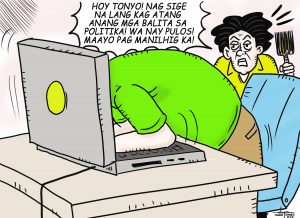Heavy rains the past few nights raised fears of another flooding in communities near the banks of the river. This anxiety is all too real, as the disasters of the past still come in the form of nightmares to many of the flood victims.
From the Gov. Generoso Bridge as we report for work early in the morning, we can see the wide Davao river rushing towards the gulf, murky from its long journey over night. Myths and legends are born from this body of water that springs from the mountains of Bukidnon, the heart of Mindanao, down to the Davao gulf. Historian Gloria Dabbay (1988) in her book said Davao river is more of folklore than fact as there were many oral histories from different tribes that refer to the river as their source of life.
There are many stories about the Davao river but none as grand and mystical as the story of Datu Bago, Davao Citys hero. He built his stronghold in the Davao Gulf and organized a formidable force of valiant men who fought the Spanish colonizers who came to the island in the early 1800s.
Datu Bago and his men were subdued but not conquered, as history would say. In 1848, Don Jose Oyanguren assisted by the Sama tribe from what is now known as the Island Garden City of Samal, and others warriors from Luzon and the Visayan islands drove Datu Bago out of the Davao Gulf, pushing him and his men inland through the Davao River. The Kagan tribe living along the river helped him evade his enemies as they were in control of the river system.
A century hence, the river has changed.
The banks of the river have widened, and what was once home to the Kagans have now become subdivisions or quarry sites. There is no longer anything whimsical about the Davao River. Its waters no longer frolic around boulders and rocks, there are no whirlpools or mini waterfalls just a steady, muddy flow down to the gulf.
The river now has a new narrative.

